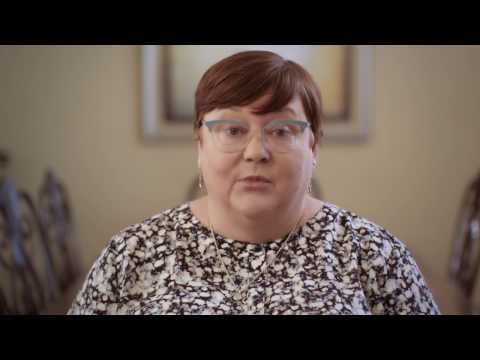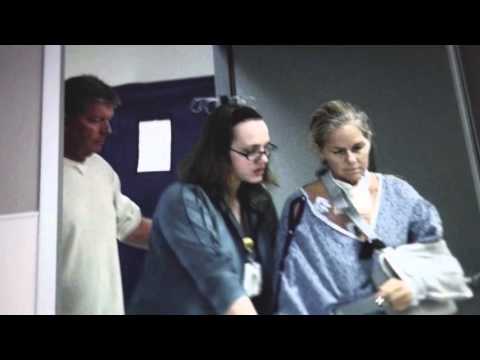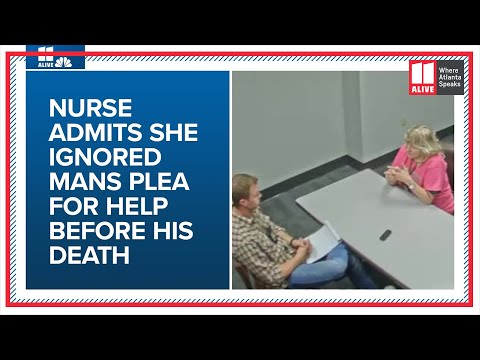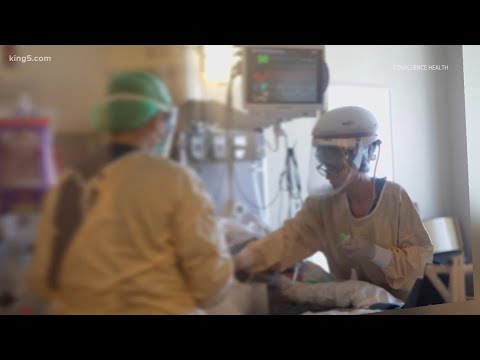Can you feel this? No? OK. Could just be the third-degree burns. You’re on the mend, I’m sure. Just a couple surgeries, a six-drug medicine regimen, and several shifts of questionably engaged healthcare professionals, and you’ll be outta here in no time. What could go wrong? Wait…which syringe was I supposed to use again? Anyway, for now, just rest up. Or maybe rest in peace. Nurses are a reflection of the labor force as a whole: many are overworked, and others are simply morons. Here are ten ways nurses could kill you.
10 Giving You the Wrong Medicine
In 2017, RaDonda Vaught, a nurse at Vanderbilt Hospital in Tennessee, made a series of 10 mistakes—including overlooking boldface warnings on the drug packaging—before accidentally giving a patient a fatal dose of the wrong medication. Vaught told investigators she was “distracted” by an unrelated conversation with a colleague when she used the wrong drug from a medication cabinet—one that was marked with warnings that its contents were for emergency use only. While most medication errors don’t result in death, they are worrisomely common. A study conducted at two teaching hospitals found almost 2% of patients experienced a “preventable adverse drug event”—officialese for “screw-up.” In addition to patient harm, such mistakes also drive up the cost of healthcare. The study placed the annual cost for a 700-bed hospital at about $2.8 million; if that trend held true nationally, it means medicine errors add around $2 billion to U.S. hospital costs. When pharmacies and doctors’ offices are included, the stats climb even more unacceptably high. A 2017 University of Chicago study estimates that one in five Americans have experienced medication errors (LINK 1), which is actually an improvement over a 2002 study that found one in five medication doses had errors in hospital settings alone.[1]
9 Giving You the Wrong Dosage
Several medicines commonly used in healthcare settings can be lethal if too much is administered. In 2011, a nurse at Good Hope Hospital in Birmingham, England, killed a patient by accidentally giving her ten times the prescribed dosage of potassium chloride, which combats low potassium levels. Watch this video on YouTube In 2015, a nurse from Summerlands Hospital in Somerset, England, was visiting a patient at home when she administered 4,200mg of the antipsychotic clozapine. The correct dose was 200mg. Her excuse for administering 21 TIMES the prescribed dosage was she’d misread the label. The patient died. The most common drug associated with accidental healthcare overdose deaths is the painkiller morphine, which can cause the respiratory system to slow until it halts. In hospitals, morphine has a killer combination of being tightly dose-dependent and near-ubiquitous. Ditto for nursing homes, where patient deaths via nurse-administered morphine overdose are so typical that a legal cottage industry exists surrounding it. Morphine overdoses are among the leading reasons for lawsuits filed by relatives of deceased patients. Of course, not all morphine overdoses involve seniors—and one such incident was particularly tragic. In 2001, a nine-month-old in post-operative care died after a misplaced decimal point on a label caused a nurse to administer a massive overdose of morphine. Instead of two 0.5 milligram doses, the child was given two doses of 5 milligrams each—10 times the amount intended by the surgeon.[2]
8 Dropping You
It’s a rarity, but newborn babies have been killed because a butterfingered nurse dropped them. Last year, at a hospital in Hyderabad, India, a woman gave birth to a healthy baby boy, who was then dropped on his head by a young nurse. The newborn was transferred to a neighboring surgery center but was declared dead. In 2016, a woman in Queensland, Australia, rushed to the hospital during an uncommonly quick labor, arriving at a birthing room just in time. The baby had trouble breathing, so doctors decided to take the infant to an adjacent room stocked with a respirator. The child never made it there. Instead, the mother heard, in her words, “a thump and a slap.” The newborn-fumbling nurse testified that “I had the baby in my hands. I had slipped—fell to my knees—and the baby had come out of my hands.” When asked why there was no bassinet to transport the baby, the midwife revealed that the hospital didn’t keep them in the rooms. One recent instance was especially shameful. In 2020, a New Zealand woman whose pregnancy had been complicated was about to give birth…but neither doctors nor nurses believed her. She was largely ignored for several hours despite screaming in agony—and allegedly even told to “shut up.” Shortly after her shushing, the baby was born…and neither the doctor nor nurse caught it. It landed on the floor and died 90 minutes later. Nice work, everyone.[3]
7 Miscommunication
Modern medical record keeping can be a muddled mess. As more healthcare facilities gradually evolve into full-scale digitization—adopting electronic medical record systems or EMRs—the current state of inpatient oversight often involves a complex hybrid of synced caregiver apps and traditional pen and paper note-taking. Watch this video on YouTube And so far as patient care communication is concerned, a general rule of thumb is “the more, the messier.” Especially in large hospitals, the number of healthcare professionals who treat a singular patient can vary greatly. This means that handoffs must go seamlessly to ensure continuity of treatment, and unrecorded medicine administration or a skipped procedure that goes unnoticed can lead directly to accidental patient death. Adverse events due to miscommunication are a sizable subset of the larger “medical errors” category that, incredibly, may be the third leading cause of death in America after heart disease and cancer (and Covid, but that’s an anomaly). Research shows improving communications between healthcare providers can reduce related patient injuries up to 30%. “When there’s a breakdown in communication, it sets the stage for potential errors,” said Daniel West, professor of pediatrics at UC San Francisco’s Benioff Children’s Hospital. Such errors lead to upward of 1,000 U.S. deaths per day and add over $1 trillion—with a T—to healthcare costs each year.[4]
6 Giving You the Wrong Blood Type
Especially in emergency settings, patient care requires healthcare professionals to process a large amount of data quickly and correctly. Overlooking a detail can be the difference between life and death. Watch this video on YouTube One such scenario involves blood type compatibility. When a patient receives a transfusion of incompatible blood, the result can be something called hemolytic reaction. Such events can occur not only due to blood type—A, B, O, etc.—but also Rh factor, an inherited protein on the surface of red blood cells. (If your blood has the protein, you’re Rh-positive; if not, you’re negative). If the transfused blood isn’t compatible with the patient’s, the immune system can fiercely attack the transfused red blood cells enough to be life-threatening. In 2018, a woman with type B+ blood died at Baylor St. Luke’s Medical Center in Houston, Texas, after receiving A+ blood. In 2013, a 40-year-old man died at New York City’s Coney Island Hospital under similar circumstances. Fortunately, such instances are rare; for example, only seven wrong-type deaths were recorded in 2017. Also, there’s a “get out of mistake free” card that likely mitigates blood type errors: Known as the “O is OK” rule, blood type O is compatible with any other blood type. Along with the fact that 38% of people are type O-positive, that is why O is transfused more than any other type.[5]
5 Spreading Deadly Germs
Try as they might to keep facilities sterile, doctors and nurses struggle to prevent serious, sometimes lethal bacteria from infecting already-sick patients. One notorious outbreak occurred in 2012, when a hellish bacteria called Carbapenem-Resistant Enterobacteriaceae, or CRE, spread like wildfire through U.S. hospitals and nursing homes. CRE is stubbornly resistant to antibiotics and kills about half of those it infects. The Centers for Disease Control found its presence in nearly 200 facilities, and that 4% of hospitals and a sickening 18% of nursing homes had reported at least one infection in the first six months of 2012 alone. Healthcare personnel can spread such superbugs simply by doing their jobs. A 2016 study found nurses’ scrubs become contaminated with bacteria after roughly 10% of shifts. In fact, something as seemingly superficial as sleeve length can play a role in germ spread; a 2017 study found that 25% of clinicians wearing long-sleeves had contaminated sleeves and wrists compared to 0% in short sleeves. This prompted mandated attire changes in several facilities. Still, that leaves a lot of clothing, body parts, and medical instruments to keep pristinely sterile—and statistics show how impossible this is. Some 687,000 patients experience a healthcare-associated infection each year, and about 72,000 die. Recent research suggests these figures were rising slightly even before the onset of COVID-19, whose asymptomatic communicability has added a whole new level of intra-facility disease transmission.[6]
4 Not Trusting You Enough
It isn’t just communication between healthcare personnel that can cost lives. Fatalities can also result from doctors and nurses disregarding information conveyed to them by patients or their family members. Such circumstances are both completely understandable and completely regrettable. As the first in-facility patient touchpoints, nurses are trained to lean on their experiences regarding the likely causes of certain symptoms and to use their best judgment in what is often a mission-critical, highly time-sensitive moment. That training, however, can backfire—especially when preconceived biases supersede patient input. In 2016, EMTs responding to an emergency call found a woman screaming in pain in her bed. She was so unruly that she needed to be strapped down en route to the hospital. Once there, a nurse surmised that the woman was having a delusional reaction to synthetic marijuana. She continued to believe this despite the woman’s husband of more than two decades insisting his wife did not take illicit drugs. The nurse ignored his pleas and even made a crude joke before leaving the couple in an admission room, where the hysterical woman soon went into cardiac arrest. ICU doctors could not resuscitate her. The cause of death was bacterial meningitis, and the cause of the nurse’s horrific behavior was one hell of a lawsuit.[7]
3 Trusting You Too Much
Yes, you heard me, you pain pill-popping liar. Healthcare professionals are trained to record and monitor what is known as the four vital signs: pulse, blood pressure, temperature, and respiratory rate. However, in healthcare facilities across the U.S. and much of the western world, an unofficial “fifth vital sign” now exists: pain level. Notably, in the United States, the recording and monitoring of pain is a stern recommendation from the country’s largest facility accreditor, The Joint Commission. This means that, should they refuse to register patient pain levels, healthcare institutions risk ruffling the feathers of an organization whose approval they need to continue operating with consumer confidence. If you think that sounds corrupt and rife for influence by Big Pharma…well, you’re right. The problem is that pain is subjective. Per the 1-10 scale most facilities use, one person’s “2″ is another’s “8.” Add in the now decades-long habit of treating chronic and post-operative pain with opioid-based pain killers, and you’ve got a nice way to exacerbate an overdose crisis that, last year, killed over 100,000 Americans. Why? Because opioids create addicts and—speaking from experience—addicts are liars. If getting my next fix is as easy as telling a nurse I’m still in considerable pain, then I’ll take full advantage of your insanely-enabling healthcare protocols, thanks so much. At least I’ll die pain-free. [8]
2 Sheer Exhaustion
Nurses are a burned-out bunch—and that was true even before the onset of the deadliest global pandemic in a century. Nurse exhaustion—and associated job dissatisfaction—has been an issue for decades. Watch this video on YouTube Back in 2002, a wide-ranging study found 43% of nurses had high burnout scores, and a similar proportion was unhappy with their current jobs, primarily due to its superhuman demands. The study also tracked the patients of these nurses and found that, of the more than 230,000 patients studied, nearly 54,000 (23%) experienced a “major complication not present on admission,” and that more than 4,500 (2%) died within 30 days of facility admission. While it’s difficult to draw direct lines from nurse fatigue to patient injury and death, the numbers show so much smoke that a fire is certainly simmering. And, of course, the COVID-19 crisis has only poured gasoline on the flames. With COVID, the causes of exhaustion for nurses (as well as other healthcare personnel) often stem from compounding factors, including changes in work routines, drastically increased hours, stress due to the uncommonly high numbers of patient deaths, and, of course, fear of contracting COVID itself. The healthcare sector will likely be sorting out the impact on patient outcomes for years, if not decades.[9]
1 Murdering You
When all honest incompetence fails, your nurse could also just straight up murder you. But stop feeling so special because you likely aren’t the first. A 2011 study of 70 female serial killers found that 30% were nurses—and that the typical murderous medical professional offs two people per month. That’s a lot of newly opened beds. There’s a term for this: An angel of death is someone typically employed as a caregiver who intentionally harms or kills people under their care. The term is used interchangeably with angel of mercy, which has a convenient “putting you out of your misery” ring to it. Unfortunately, they can be exceedingly difficult to catch; one nurse admitted to killing as many as 40 patients in Pennsylvania over a 16-year period. Most murders committed by nurses are performed by lethal injection. And in fact, they can accomplish the deed by injecting nothing at all. In October, a nurse in Texas was found guilty of killing four patients by injecting them with air. William Davis, 37, targeted seven people from June 2017 to January 2018. The four who perished experienced “seizure-like symptoms” and died from fatal brain damage after air was injected into their arterial lines. Each of the men had been recovering promisingly from operations, leaving doctors at a loss for why their conditions deteriorated so drastically. Davis will likely face the death penalty, presumably via…you guessed it, lethal injection.[10] Read More: Twitter Website
























